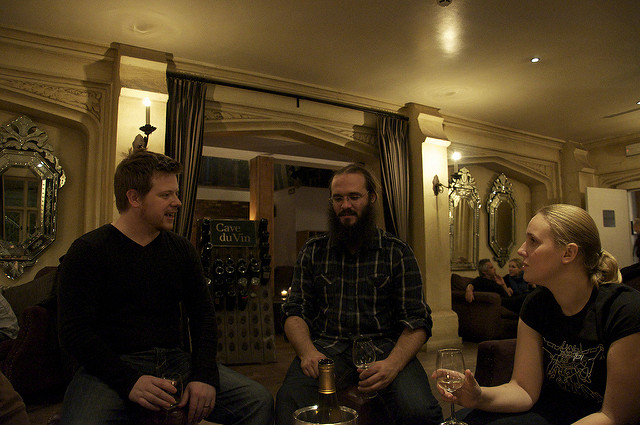
Despite the longevity signified by the phrase, “till death do us part,” many American marriages are not so permanent. The statistic that half of marriages end in divorce has been cited for decades, but research by Philip Cohen shows that divorce rates have been falling for the last few years, even after accounting for demographic changes over that time. In a recent article in The Atlantic, Andrew Cherlin provides an unromantic explanation for the recent trend: “In order to get divorced, you have to get married first.”
In other words, declines in divorce are more driven by who is getting married than increased marital stability. Historically, divorce rates have been highest among Americans without a college degree. However, this group is now more likely to delay or forego marriage than they were 20 or 30 years ago. Victor Chen suggests that one factor responsible for marriage declines among people without a college degree is lack of jobs. Well-paying jobs for the less educated have become sparse as the American economy has transitioned away from manufacturing. Without stable employment, it is harder to maintain long-term romantic partnerships.
Another factor could be a rising acceptance of cohabitation, which has decreased the pressure for couples in their 20s to marry. Delaying marriage has benefits for marital quality. Cherlin explains:
“If you’re older, you’re more mature … you probably have a better job, and those things make it less likely that you’ll get into arguments with your spouse.”
However, declines in marriage do not necessarily mean that Americans are getting better at long-term partnership. Rather, relationship volatility is moving from the context of marriage to cohabitation, where it is harder to measure. These falling marriage rates among the less-educated parallel a growing gap between the richest Americans and everyone else. College graduates, who are more likely to marry, are better positioned to endure economic uncertainty and build wealth through their pooled incomes. This leads Cohen to conclude that marriage is “an increasingly central component of the structure of social inequality.” In other words, while declining divorce may look like a positive trend at first glance, it may speak more to growing inequality than it does enduring love.




